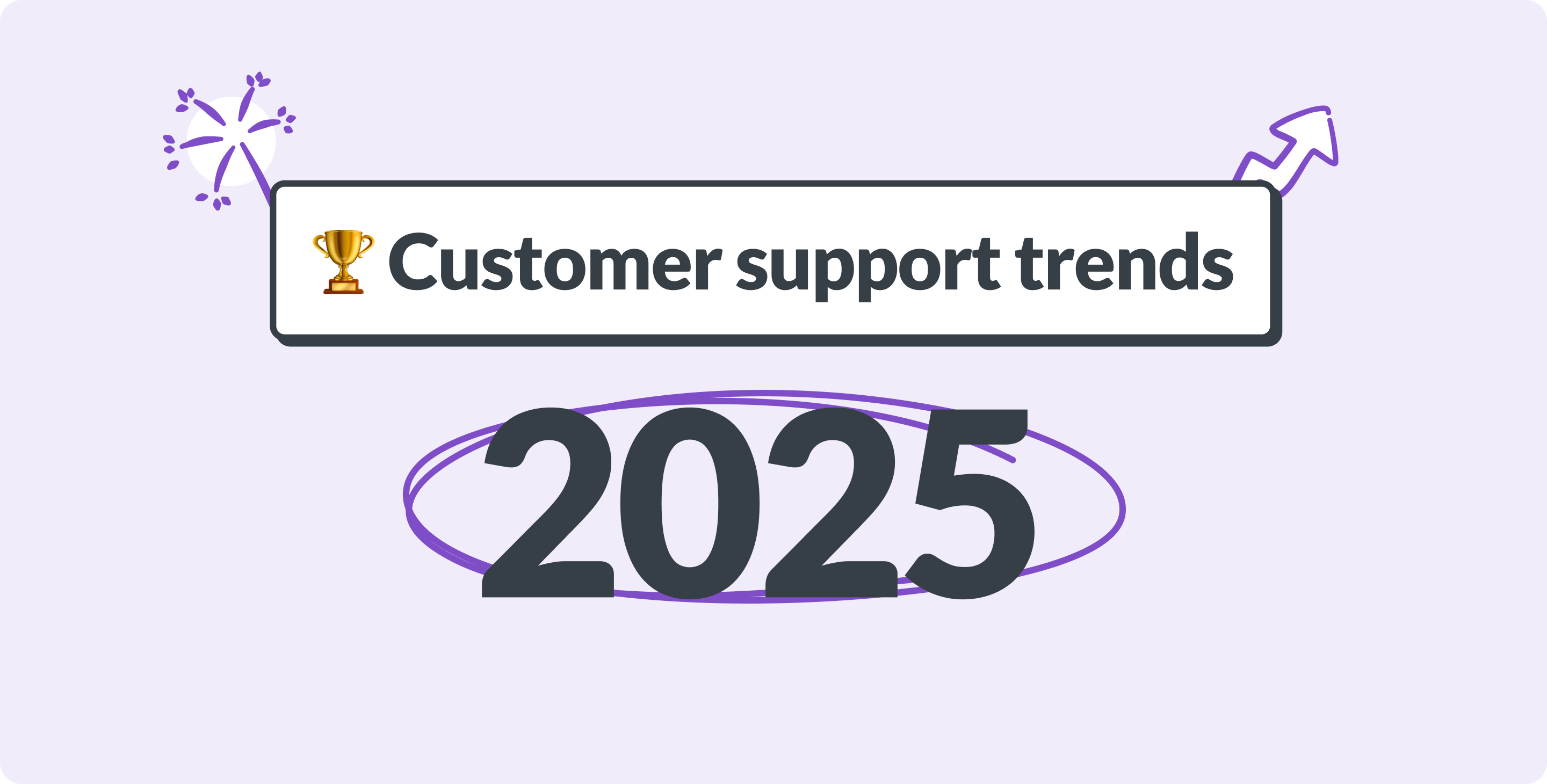In the world of customer support, 2024 was the year of AI. Will the AI adoption trend continue, or is it a bubble preparing to burst? What other trends should we keep in mind as we navigate this evolving landscape?
Let’s take a quick look at consumer trends in 2025, with an emphasis on what Support teams need to focus on. From cutting-edge technology to shifting customer expectations, here are the trends that will shape the year ahead.
1. AI matures from novelty to necessity
If 2024 was the year of AI experimentation, 2025 is about AI refinement.
The use of AI in customer support—once seen as a cutting-edge novelty—is now a must-have for efficiency and scalability.
This aligns with the broader customer success trends for 2025: in addition to efficiency, businesses need to prioritize empathetic, meaningful connections. After all, 67% of consumers say that empathy and creativity are an important part of their Support experience!
That means AI can’t take over completely, but it can certainly help Support teams provide amazing experiences:
- Seamless collaboration (hybrid service) — Instead of replacing human agents, AI can take over repetitive queries, leaving human agents with more time to tackle more nuanced cases.
- Sentiment recognition — Advanced AI can detect customer emotions. For example, our Topics feature categorizes customer comments and makes it easier for our Support agents to look them over.
2. Omnichannel support takes center stage
Customers don’t think in silos, and neither should your Support strategy.
Customer service expectations in 2025 include consistent service across platforms. Whether it’s email, social media, live chat, or phone calls, customers expect seamless transitions between channels.
- Platform agility — From WhatsApp to Instagram DMs, teams must be prepared to engage on a variety of platforms.
- Unified systems — Support teams are adopting platforms that centralize customer interactions, ensuring no context is lost between channels. Omnichannel customer feedback collection is a must-have!
Omnichannel support is about reducing friction and delivering fast, effective solutions wherever the customer is.
3. Proactive support is the new standard
Proactive support—where companies anticipate and address issues before they arise—is no longer an aspirational goal. It is necessary to maintain a competitive edge.
That means:
- Sending notifications about service disruptions or updates before customers reach out.
- Using predictive tools that identify potential problems based on usage patterns.
- Sharing personalized tips and resources to help customers get the most from your products or services.
This proactive approach drives loyalty, as customers feel empowered and become invested in their experience with your brand.
4. Accessibility and inclusivity are must-haves
Accessibility is a business imperative this year, as companies strive to cater to large and diverse audiences, and inclusivity shapes brand perception.
Simple ways to approach accessibility:
🤖 AI-powered features — Use tools like speech-to-text for hearing-impaired customers and screen-reader compatibility for visually impaired users.
🗺️ Multilingual Support — Catering to global customers is getting easier with new translation technologies.
👍 Simplified Processes — Prioritize interfaces that are designed for ease of use, catering to users with varying tech literacy levels.
Recommended reading: How CES ensures your product is easy to use
5. Empowering the customer with self-service
Self-service options are no longer an afterthought—they’re a crucial part of any support strategy in 2025. Customers want the freedom to solve their own issues quickly and efficiently.
Consider investing in a dynamic, AI-driven system that offers instant answers based on customer queries.
But there are more affordable options to consider as well! Visual step-by-step guides can simplify complex troubleshooting. You can also easily build peer-to-peer support platforms (like a forum or dedicated Slack group) where customers share solutions.
6. Data-driven insights for smarter support
In 2025, data-driven strategies will play a pivotal role in refining processes and delivering better customer experiences.
- Predictive insights — Identifying potential pain points before they escalate into larger issues.
- Performance metrics — Tracking KPIs like resolution time, CSAT, and NPS to assess and improve team effectiveness.
Fortunately, customers are happy to provide this data, as long as you’re willing to ask the right questions. Simple prompts like “What could we do better?” or “How can we make your experience easier?” can unlock powerful insights, especially if you also allow your customers to provide feedback in their own words.
Couple this with questions for your Support team — like “What tools do you need to excel?”—and you’ll have a clear roadmap to improved customer support.
Aim for support excellence in 2025
Success this year lies in adaptability. It’s not easy to find a balance between technology and humanity, efficiency and empathy, and innovation and affordability. You also have to keep an eye on rapidly-evolving customer expectations, as well as any new trends that might make these predictions obsolete.
But there is a bright side despite the pressure. In the end, 2025 won’t belong to the fastest adopters of technology. The brands that will come out on top are those that make customers feel heard, valued, and understood. 💚
About Simplesat: Simplesat is the leading omnichannel survey app designed to enhance customer feedback management across various platforms, including Zendesk, Salesforce, and Gladly. Trusted by businesses worldwide, Simplesat delivers actionable insights that drive business growth and customer satisfaction.









